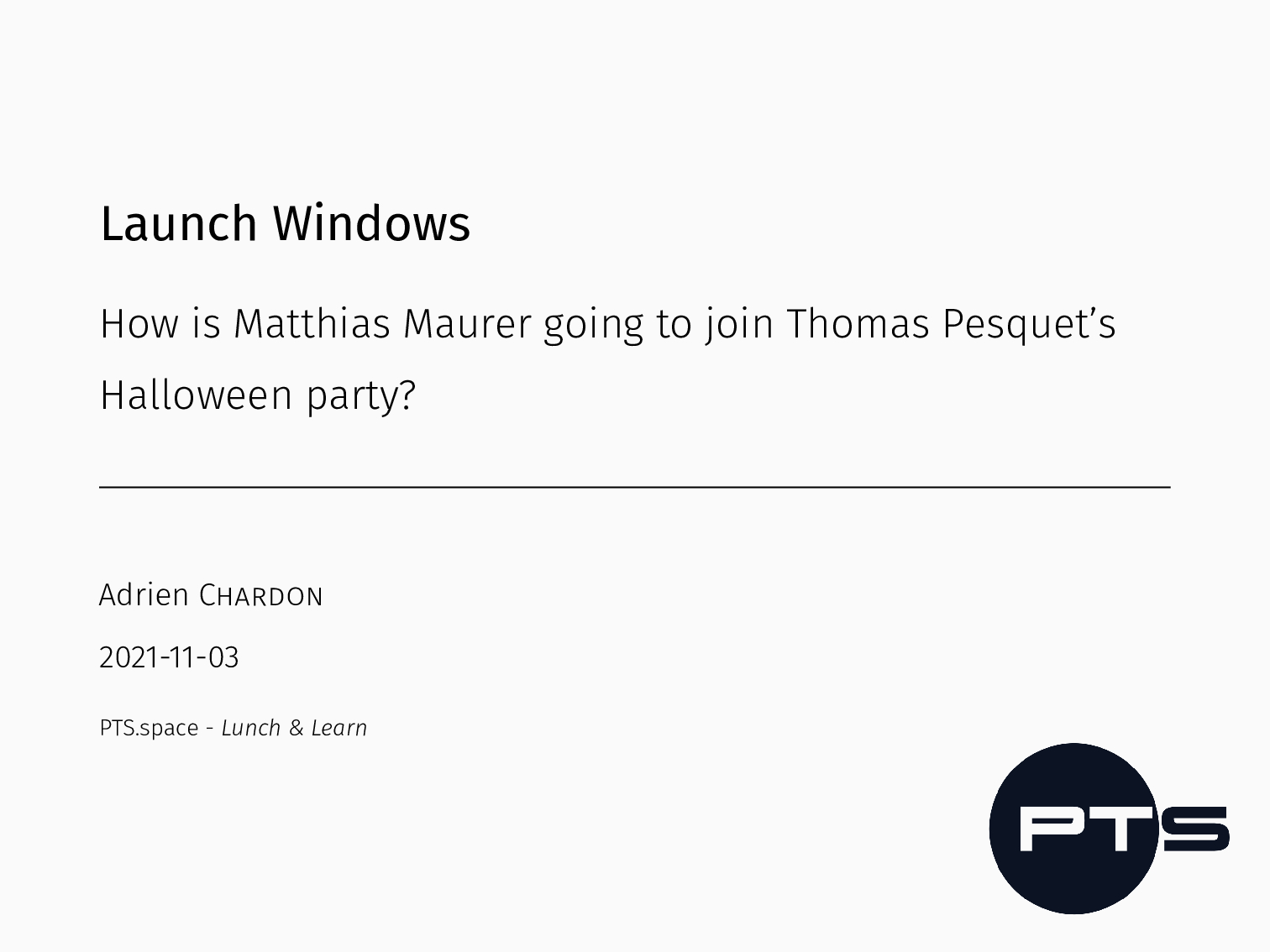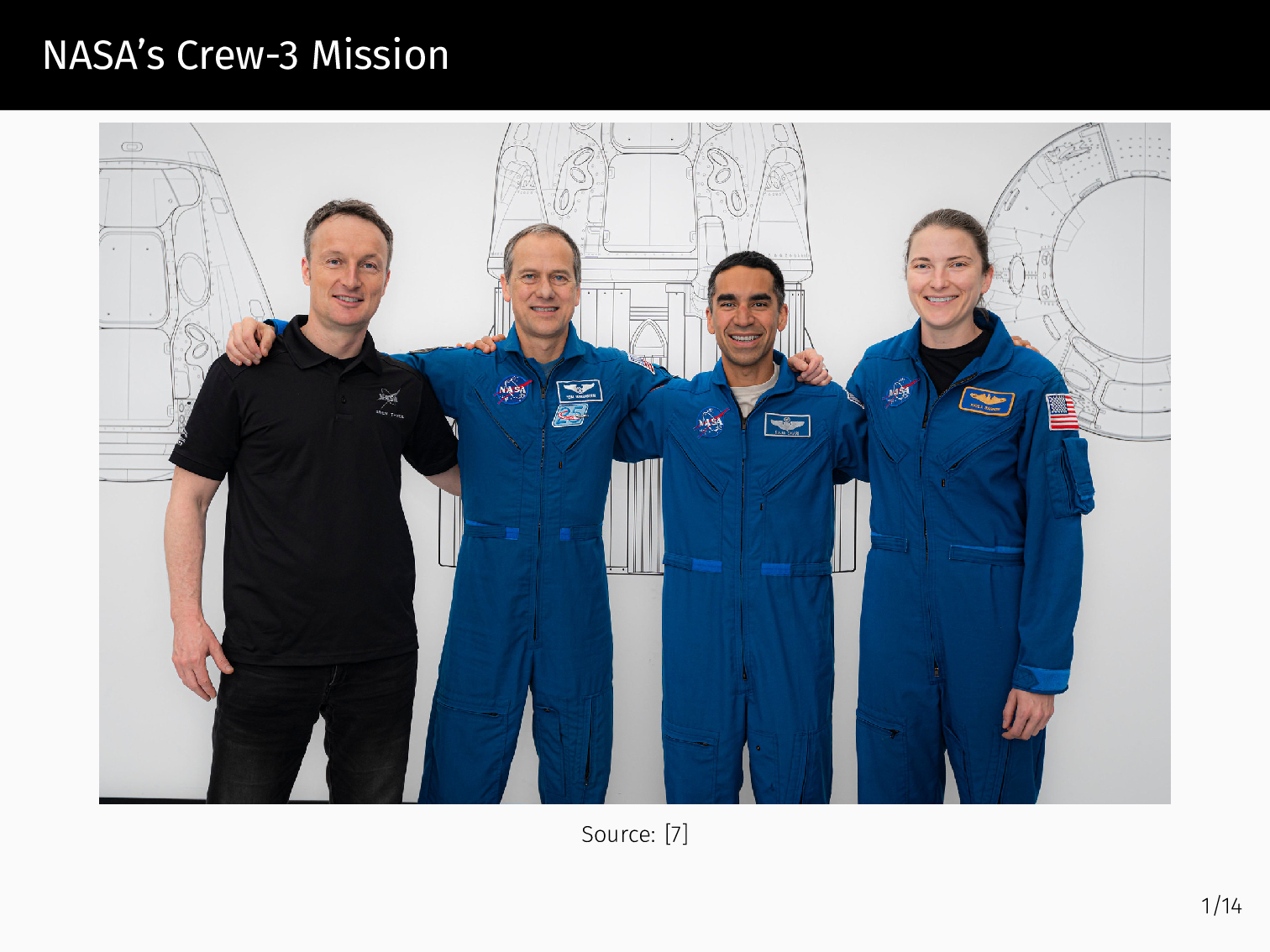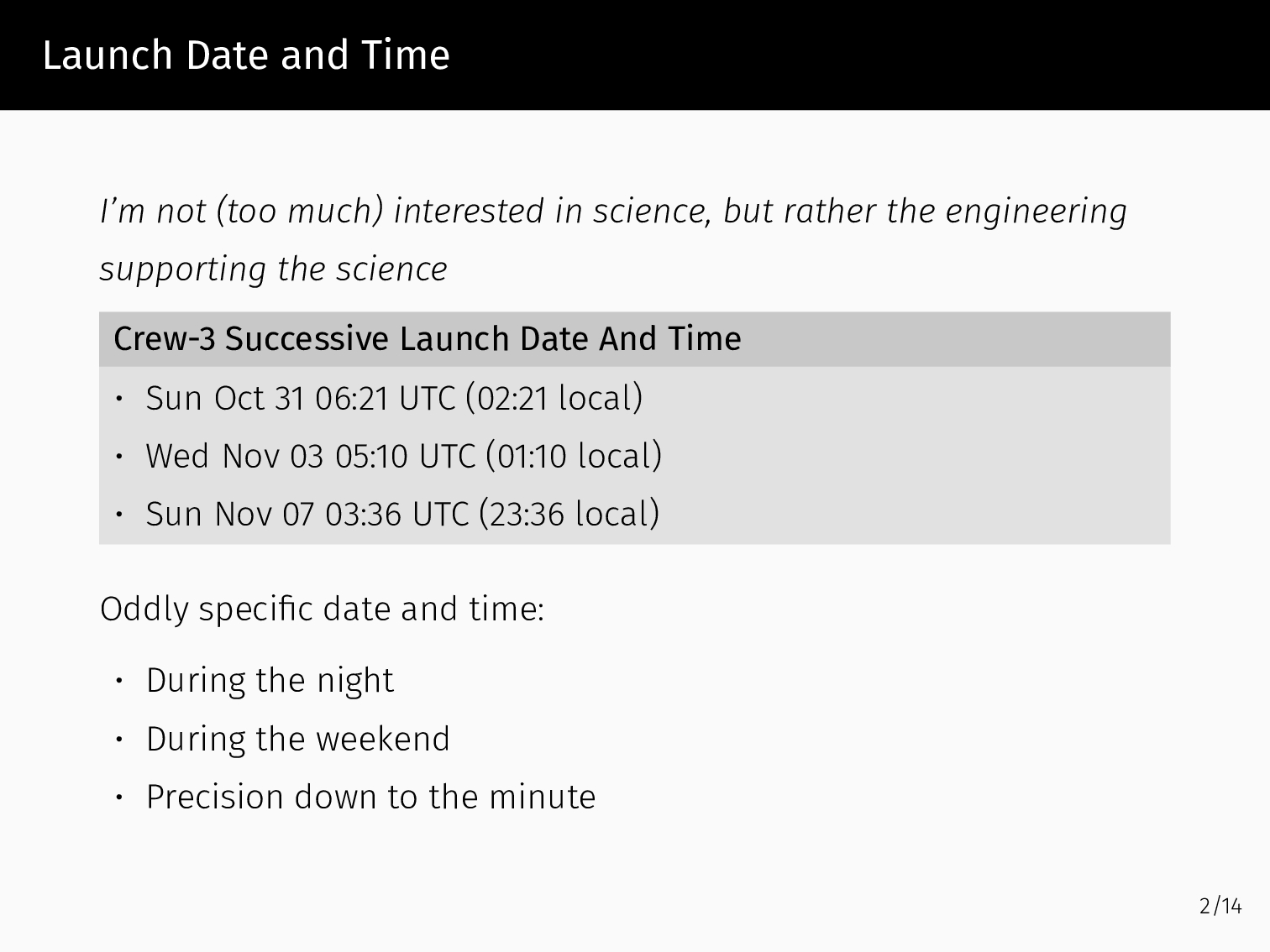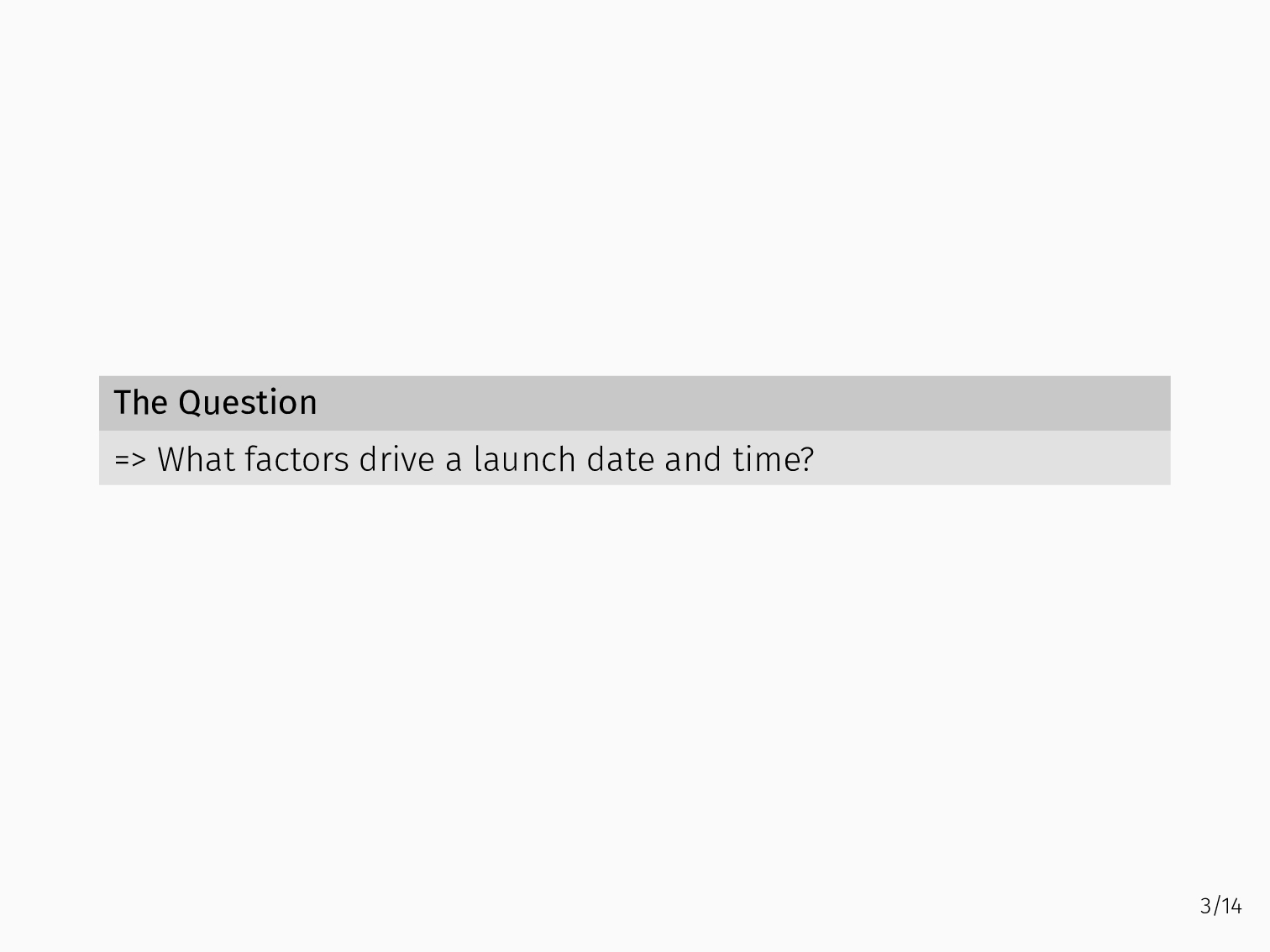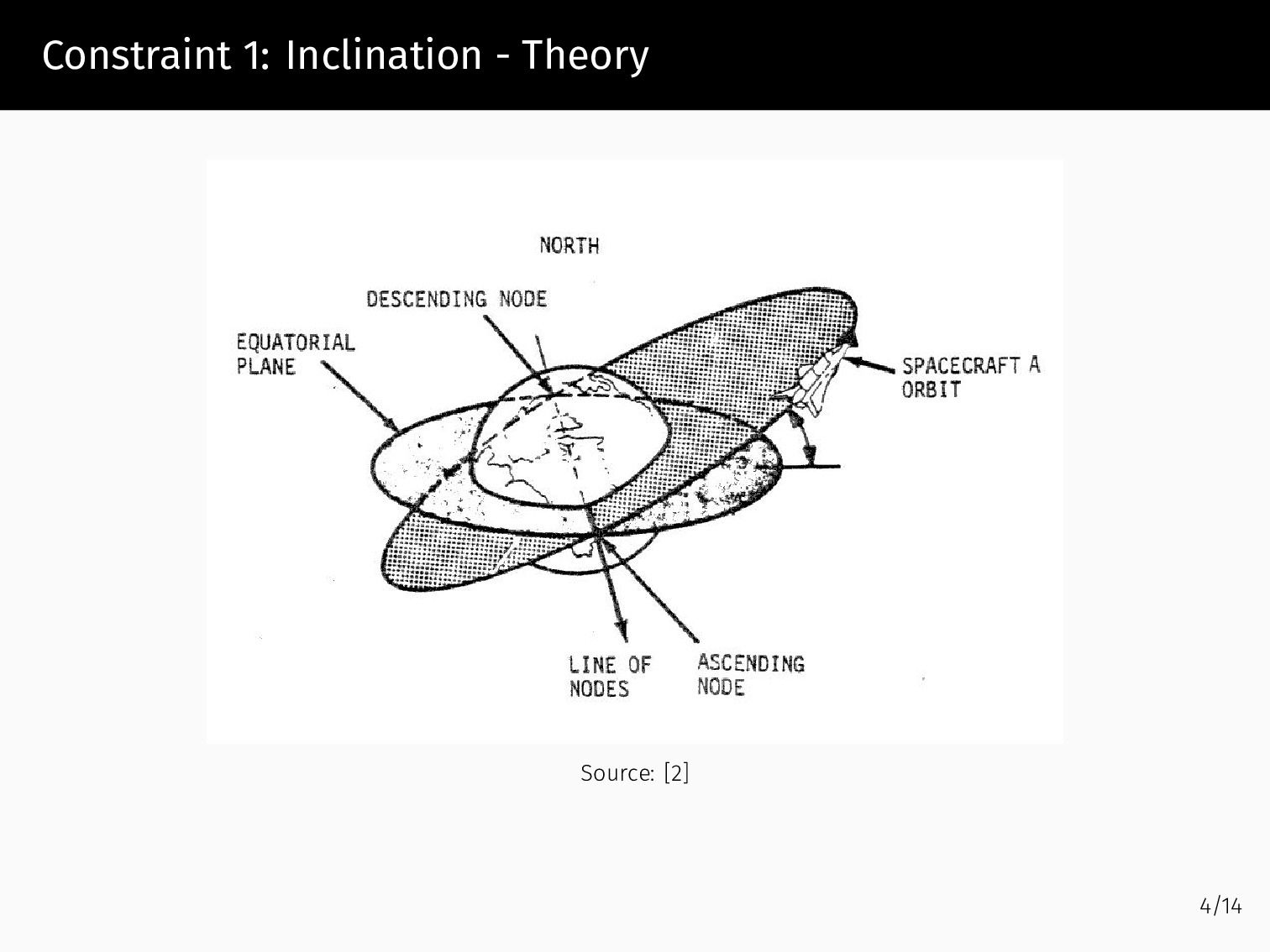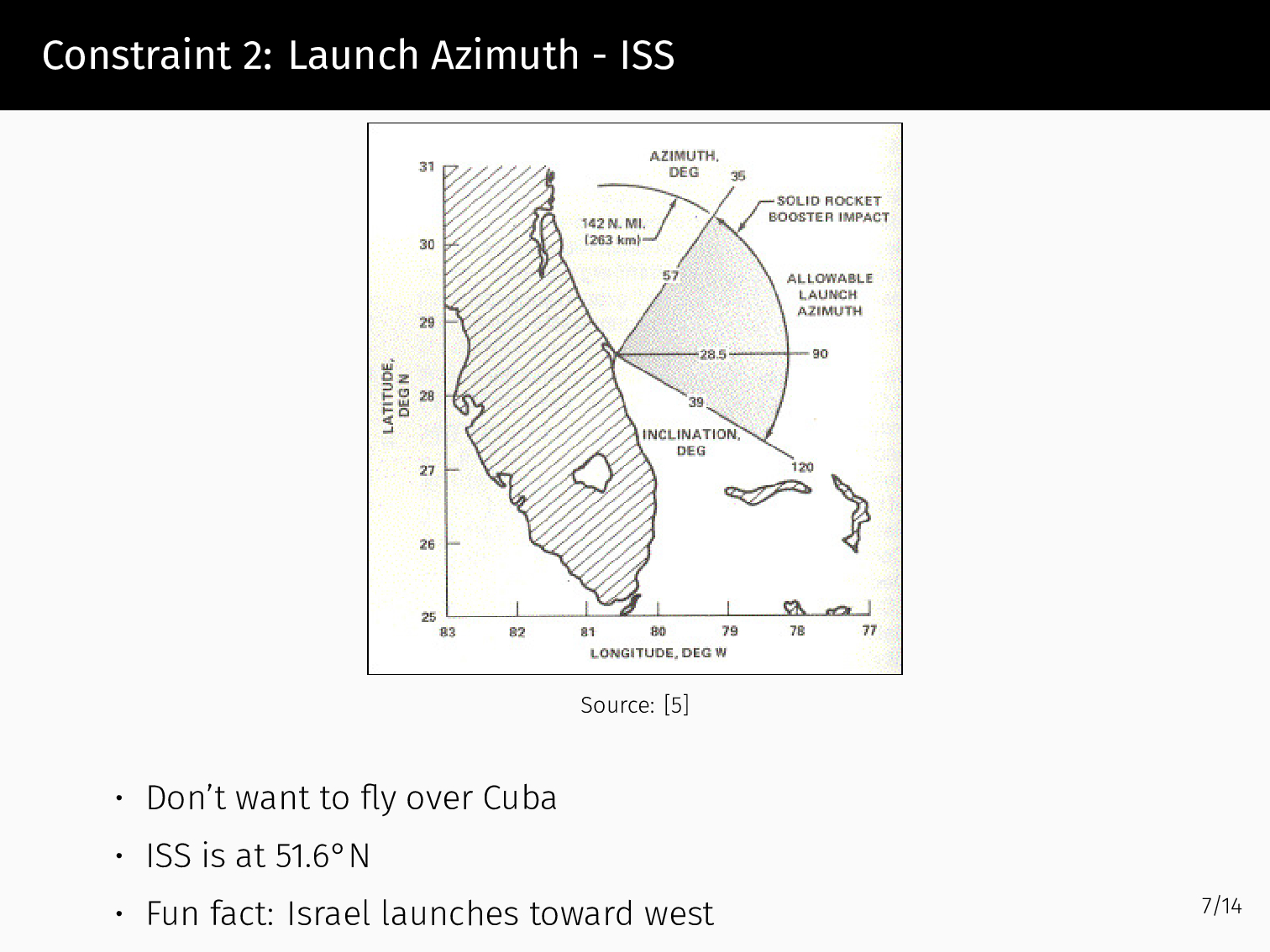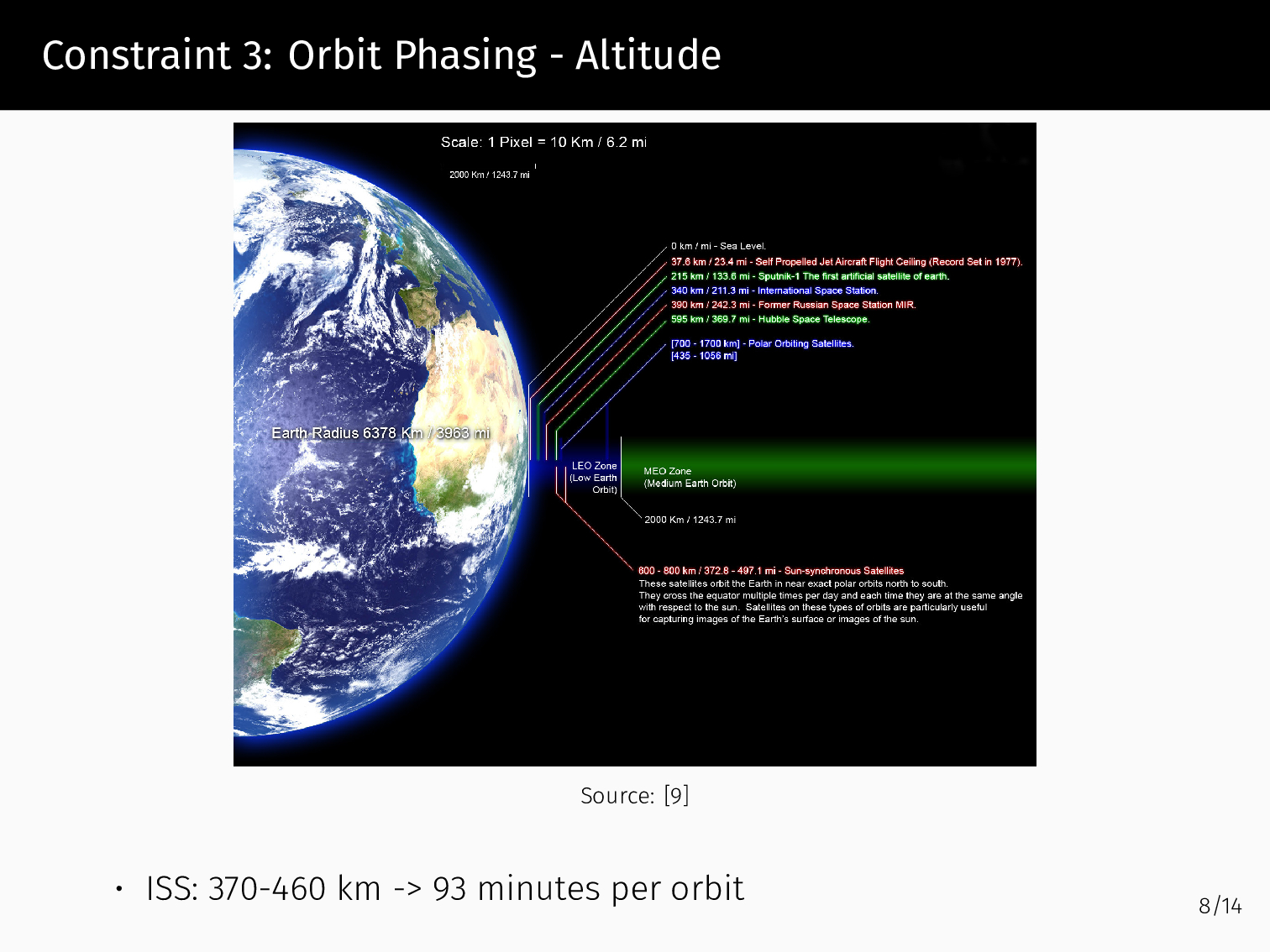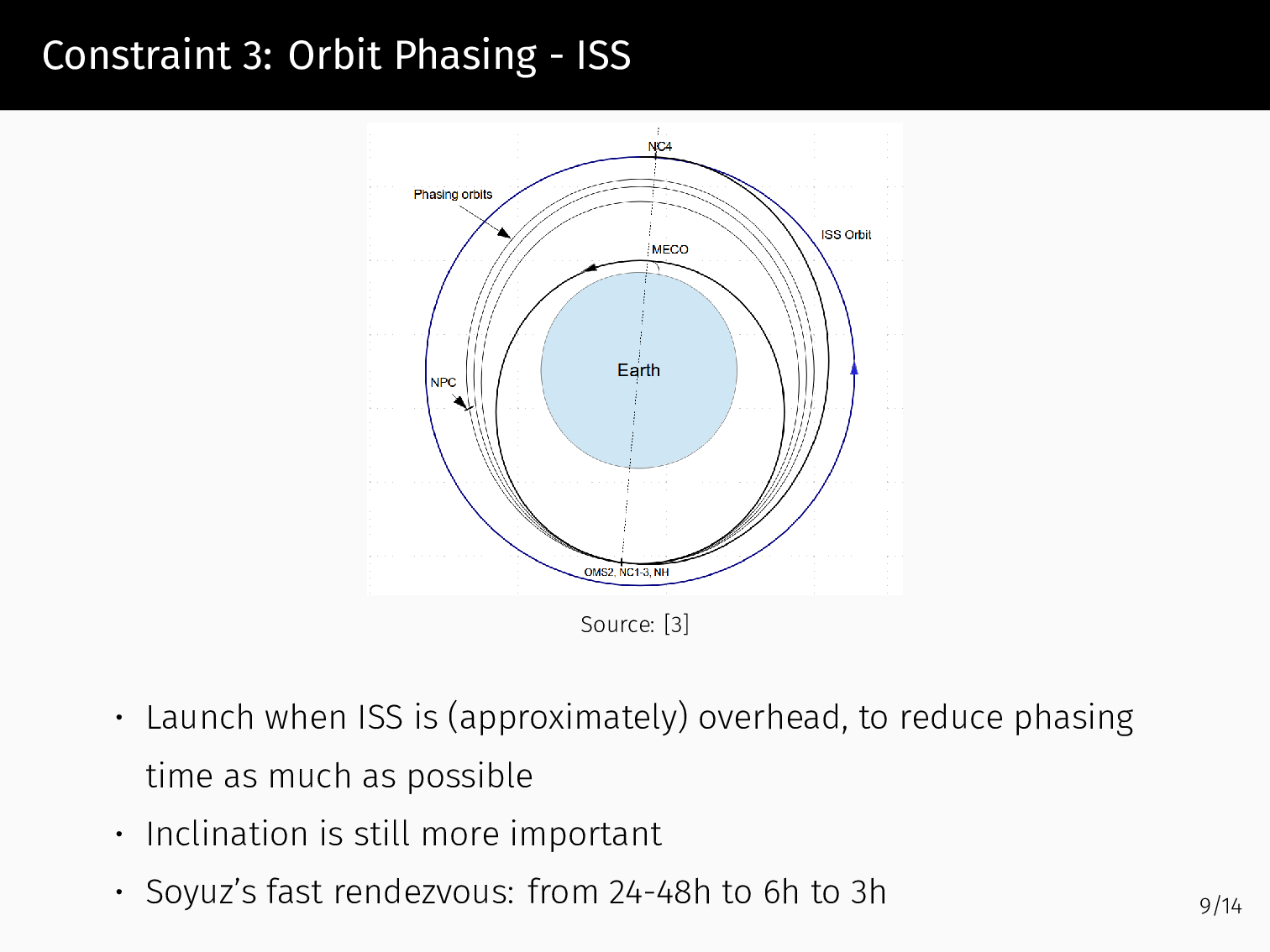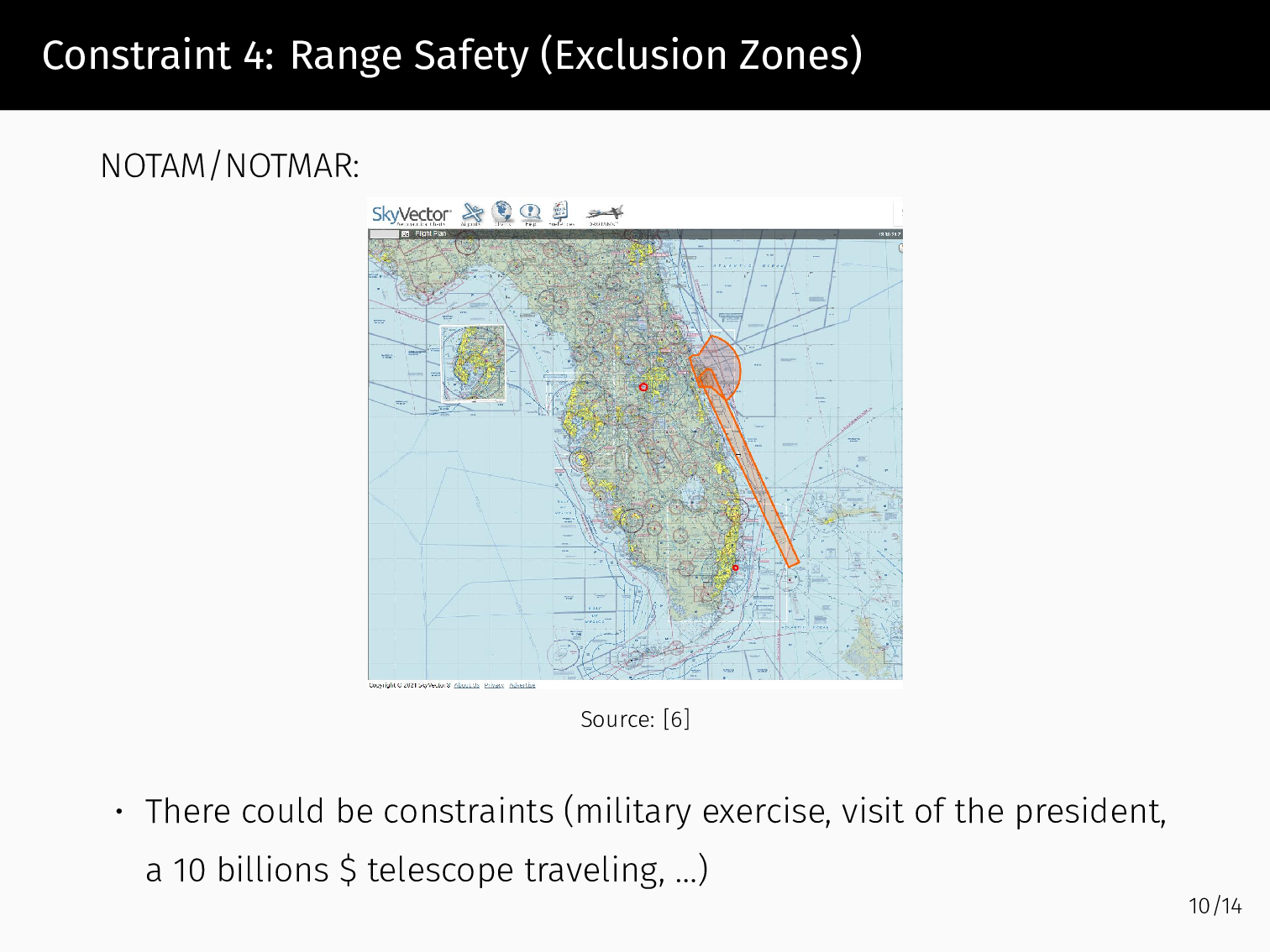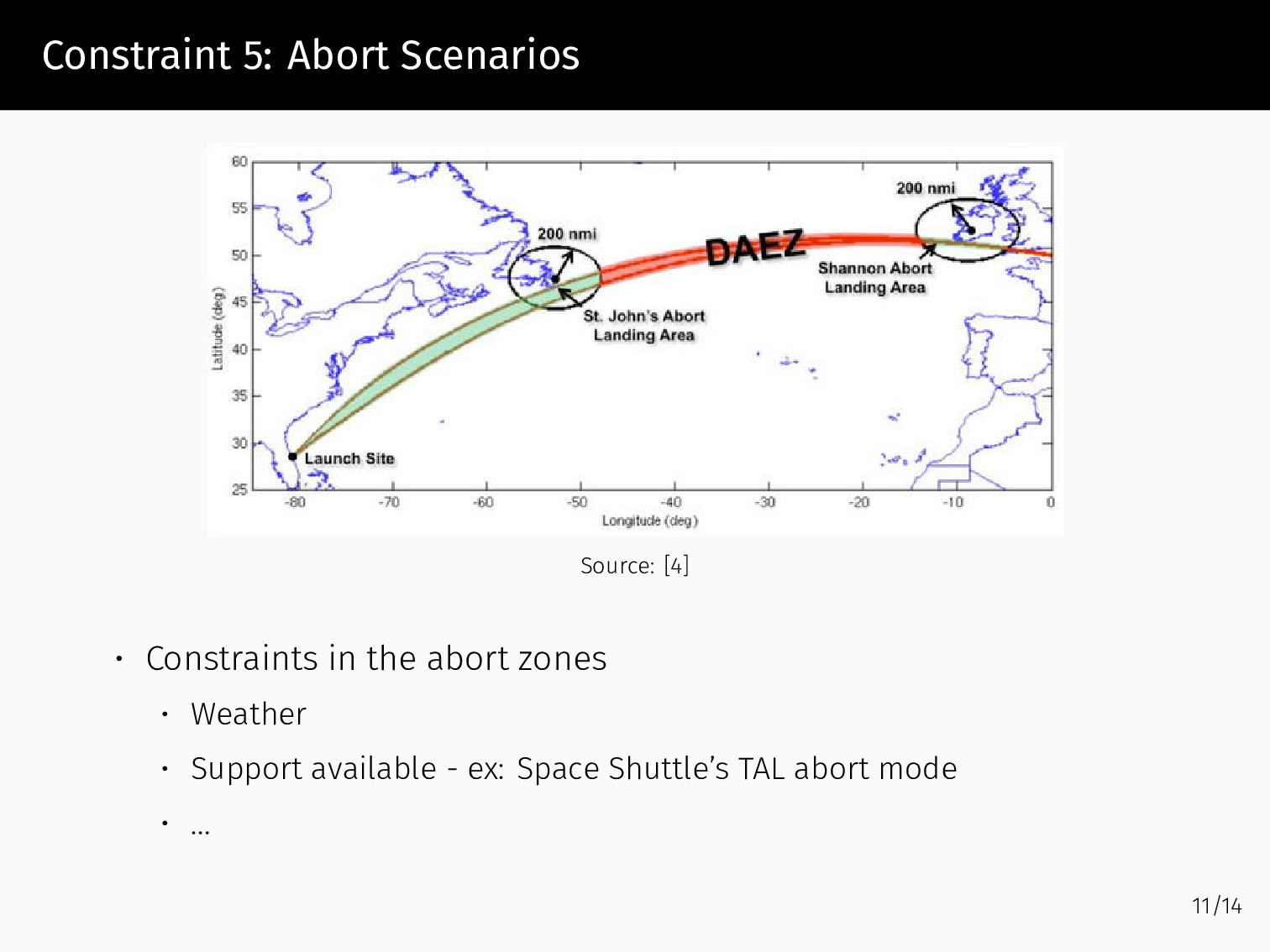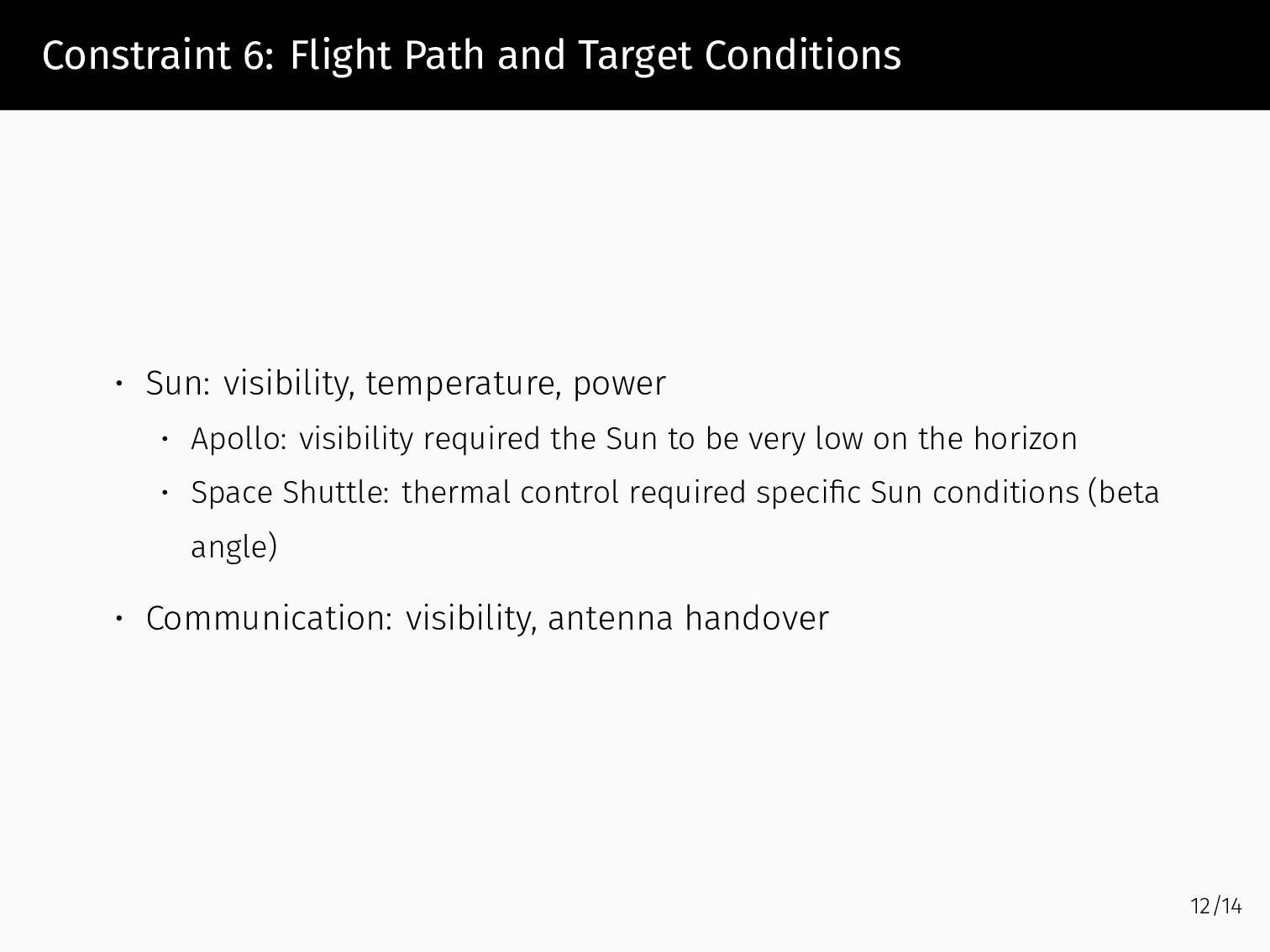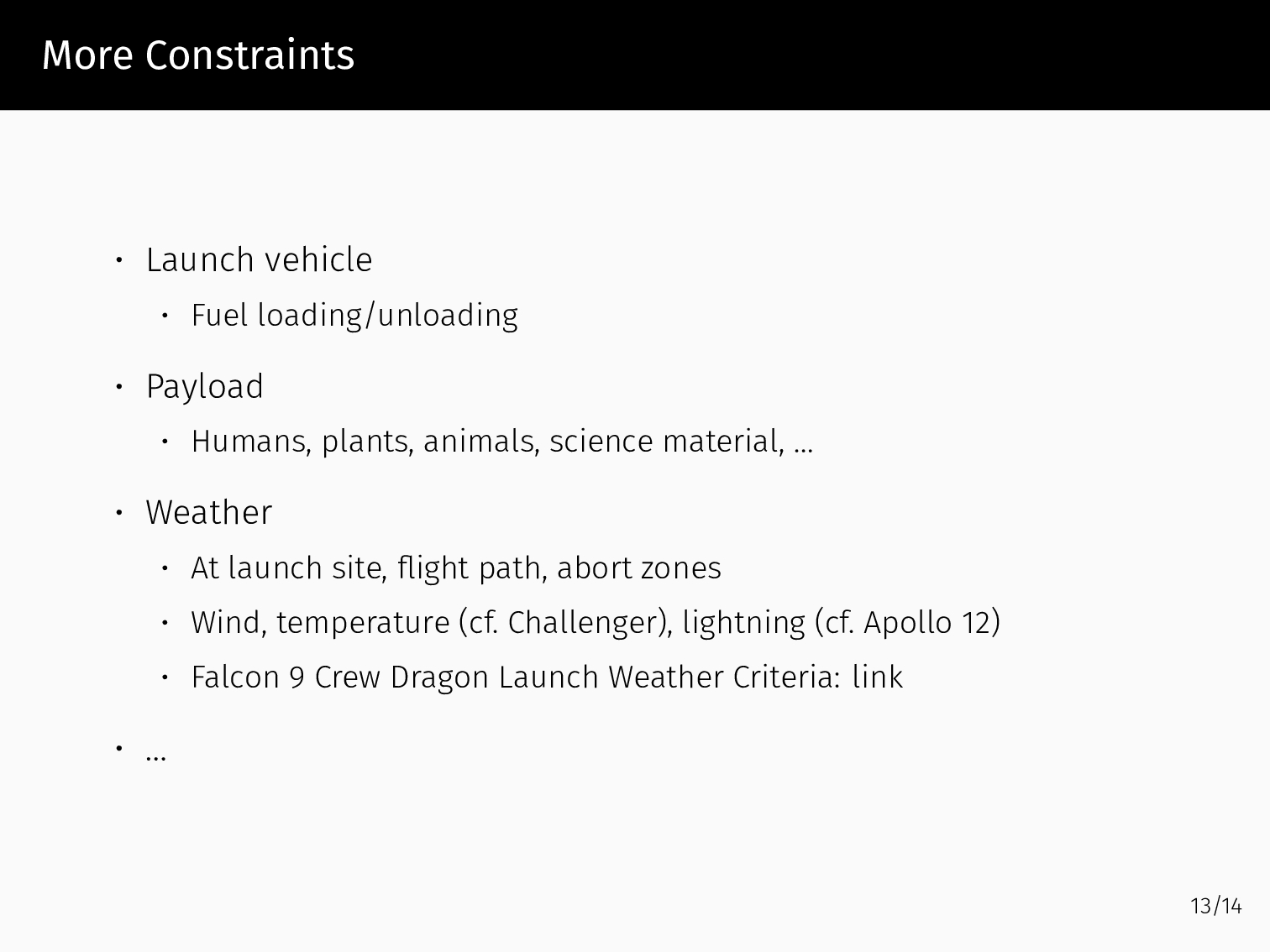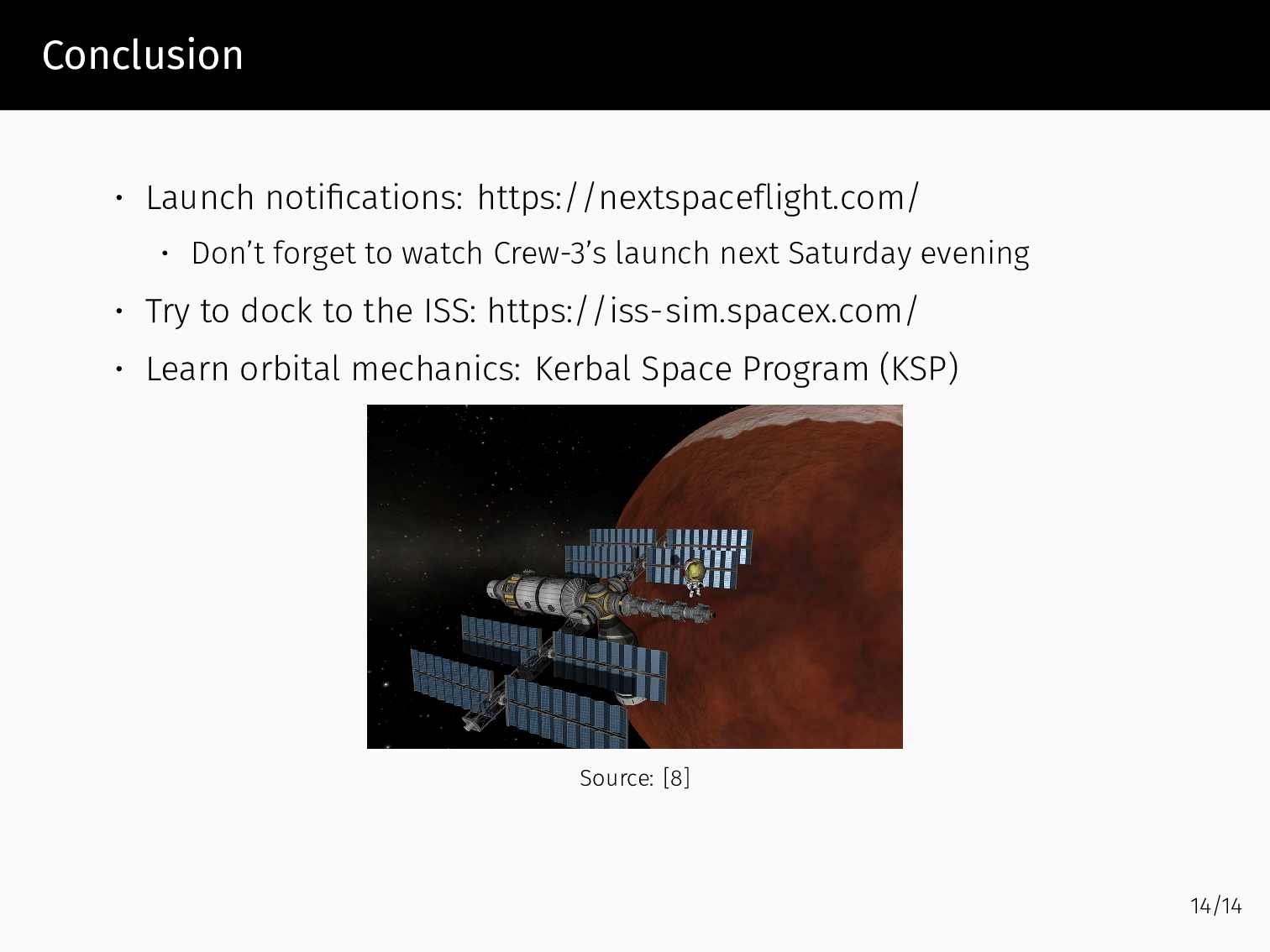Launch Windows - How is Matthias Maurer going to join Thomas Pesquet's Halloween party?
This article is a transcript of my talk "Launch Windows - How is Matthias Maurer going to join Thomas Pesquet's Halloween party?" given on the 2021-11-03 at PTS on our weekly "PTS lunch & learn" event. The source of the slides are available on my Github.
Introduction
NASA’s Crew-3 Mission
The leftmost person is Matthias Maurer. He is a German astronaut, and joined the ESA astronaut corp in 2015. After a few delays, Crew-3 finally launched to the ISS on the 2021-11-10.
Launch Date and Time
Matthias’s next 6 months will involve mostly science, some 10 hours per days, 6 days a week. That’s actually the most important part, and what we should talk about. But as an engineer, I am not (too much) interested in science, but rather in the engineering supporting the science. I am happy to work on engineering problems, and give scientists nice data they can later analyze.
That’s why I wanted to use Crew-3 opportunity to talk a bit about rocket science, in this case, launch windows.
When looking at the successive launch datetimes (pushed back due to a combination of bad weather and minor health issue), one can notice that they are very specific and not random at all: all the launch datetimes are precise to the minute (even seconds for some launches), and are scheduled during the night, sometimes during the weekend. People usually prefer to be either in their bed or in a club a Saturday at 1 AM!
There must be a reason for these launch datetimes… Let’s find out together!
The Question
This leads us to the question I will try to answer in this talk: what are the factors driving a launch date and time?
Orbital Constraints
Constraint 1: Inclination
The first constraint to consider is related to the orbital plane.
Note: for best effect, this talk should be delivered with a grapefruit - or any large, round fruit - and a piece of paper to showcase what an orbital plane is.
A spacecraft or a satellite orbits into its orbital plane. From a solar system (non-Earth) point of view, the Earth rotates, but the orbital plane is fixed. This means that any given fixed point on the Earth (such as a launch site) crosses any given orbital plane twice per day (almost, that’s true only if the inclination of the orbit is lower or equal to the inclination of the Earth point, but let’s not get lost in specifics).
The diagram on the slide shows the equator plane and an orbital plane, as well as these two points/lines were they both intersect. In this case (equator plane), these two nodes are called ascending node and descending node.
Eventhough the two intersecting nodes are instantaneous events, a rocket launching can afford some misalignment and correct it during launch: this maneuver is called dogleg and allows for non instantaneous launch windows. This can be very useful to troubleshoot any last minute issue that could arise and still be able to launch without waiting for the next window.
The Earth rotates to the east, meaning that from an Earth point of view, the orbital plane rotates to the west. At the beginning of the launch window, the plane is east of the launch site, and moves west.
Most of the rockets launching from the east coast of the USA (Space Shuttle, Atlas V, Falcon 9, …) have a dogleg capability, which they use from time to time for specific missions.
Constraint 2: Launch Azimuth
The second constraint is the range of inclinations that can be reached from the launch site. This depends on the latitude of said launch site, as well as the range constraints.
The Kennedy Space Center is at an inclination of 28 degrees, and the Baikonur Cosmodrome at 46 degrees. The ISS is at 51 degrees, which does make sense when considering two facts:
- Injecting the payload into a higher inclination than the launch site is much cheaper (in fuel) than injecting it into a lower inclination.
- Launching due east from Baikonur (to inject into a 46 degrees inclination) would overfly China and drop spent stages on inhabited areas.
51 degrees is therefore the most easily reachable inclination for both the USA and Russia which allows them to remain in good terms with their neighbors.
This shows the allowed launch azimuths when launching from the Kennedy Space Center. When launching due east, a payload would end up in a 28 degrees inclination (the inclination of the launch site). Launching slightly north (on the ascending node) or south (on the descending node) increases this inclination, to up to 57 or 39, respectively. The north and south limits are set by inhabited areas and (during the cold war) unfriendly territories (you certainly don’t want the USSR to think you are bombing Cuba, its ally).
Since the ISS is at 51 degrees, a rocket can only launch north (on the ascending node), limiting the available windows to one each day.
Fun fact: due to some (obvious) constraints on the east, Israel has to launch to the west, with a heavy penalty on the payload capability.
Constraint 3: Orbit Phasing
We have just seen that the ISS is orbiting at an 51 degrees inclination. Let’s now look at its altitude.
Most satellites are in Low Earth Orbit, between 100 km (generally accepted atmosphere-space limit) and 2000 km, depicted in blue. The ISS is at 340 km. At this altitude, the ISS makes one orbit every 93 mn. Sharp readers will calculate that it corresponds to around 15 orbits per day.
Once you are in the correct orbital plane and at the correct altitude, you might not be at the same position in the orbit (the position in the orbit is called the true anomaly). Orbit phasing means waiting on a lower or higher orbit to synchronize and reach the same true anomaly.
Let’s see on the next slide how this works.
The ISS is on the higher, blue orbit. The spacecraft launches initially in a lower orbit, in black. The spacecraft will move faster than the ISS (because the path is shorter and because it moves faster), and will therefore catch up. The spacecraft then makes a series of burns to gradually increase its altitude (following the orbits shown in gray), until it reaches the ISS.
To optimize the phasing duration, the spacecraft will launch when the ISS is roughly overhead. Inclination is still more important, because phasing is free from a fuel point of view (it only costs time).
Usual phasing duration for Soyuz used to be 24-48 hours, but this was reduced to 6h. Some studies and (uncrewed) tests are made to reduce it to 3h.
Range and Safety Constraints
Constraint 4: Range Safety (Exclusion Zones)
The fourth constraint to take into account is the range safety. I already touched this one with the launch azimuth, but I focused on lands and inhabited areas. This is about air and sea.
When a rocket launches, the airspace and seaspace are closed to avoid any collision risk. This is done by issuing notices to air men (NOTAM) and mariners (NOTMAR).
This slide shows the NOTAMs of a Falcon 9 launch a few months ago. You can see one zone for the trajectory of the first stage (landing on the barge) and one zone for the trajectory of the second stage. The airspace is closed because the rocket obviously crosses the airspace, but the seaspace is closed too because debris might fall in the sea in case of an issue.
This is a constraint because setting up these exclusion zones might not always be possible.
Constraint 5: Abort Scenarios
This constraint is my preferred: if I told you that weather in Ireland could impact a launch from Florida, you would have a hard time believing me. But it is true. Let me explain.
A crewed launch has abort scenarios and these scenarios have constraints. This slide shows the abort zone of the Falcon 9: one is off the coasts of Quebec and the other one off the coasts of Ireland. The constraints to take into account in the abort zone are of course weather, but also availability of support ships and personnels.
The Space Shuttle had a very complex and interesting abort mode: the Transoceanic Abort Landing (TAL). Before each launch, NASA choose 2 airbases in Europe (out of 4) to serve as fallback options in case of issues too late in the launch to come back to mainland USA, but still to early to allow the Shuttle to reach orbit. One such base was the Istres military base in the south east of France. NASA would flew several (!) aircrafts with support material and personnel to help take care of the Shuttle in the case of an abort.
Other Constraints
Constraint 6: Flight Path and Target Conditions
I mentioned the abort scenarios, but even when everything goes as planned, there are still a lot of constraints along the flight path.
The sun is a huge constraint, because of all the effects it can have: light, heat, and power generation. Spacecrafts and mission planning in the past were heavily dependent on it. This is obviously still true today, due to the high usage of solar panels.
Communication can also be an issue: you don’t want a critical operation requiring perfect communication to happen right when your antenna goes out of visibility or needs to switch its relay or ground station.
More Constraints
Constraints are plentiful and this was just a few of them. You also need to watch many other things:
- The launch vehicle can only be ready for a finite amount of time, mainly due to fuel and oxidizer boiling off. For example, the SLS boosters have a one year shelf life after being stacked together.
- The payload is often very delicate and needs special care as well.
- The weather at the launch site is very much monitored. For example, here is a summary of Falcon 9’s weather criteria.
- This list is of course non exhaustive…
Conclusion
To finish, here a few links to learn more. The source of the slides are available on my Github.
